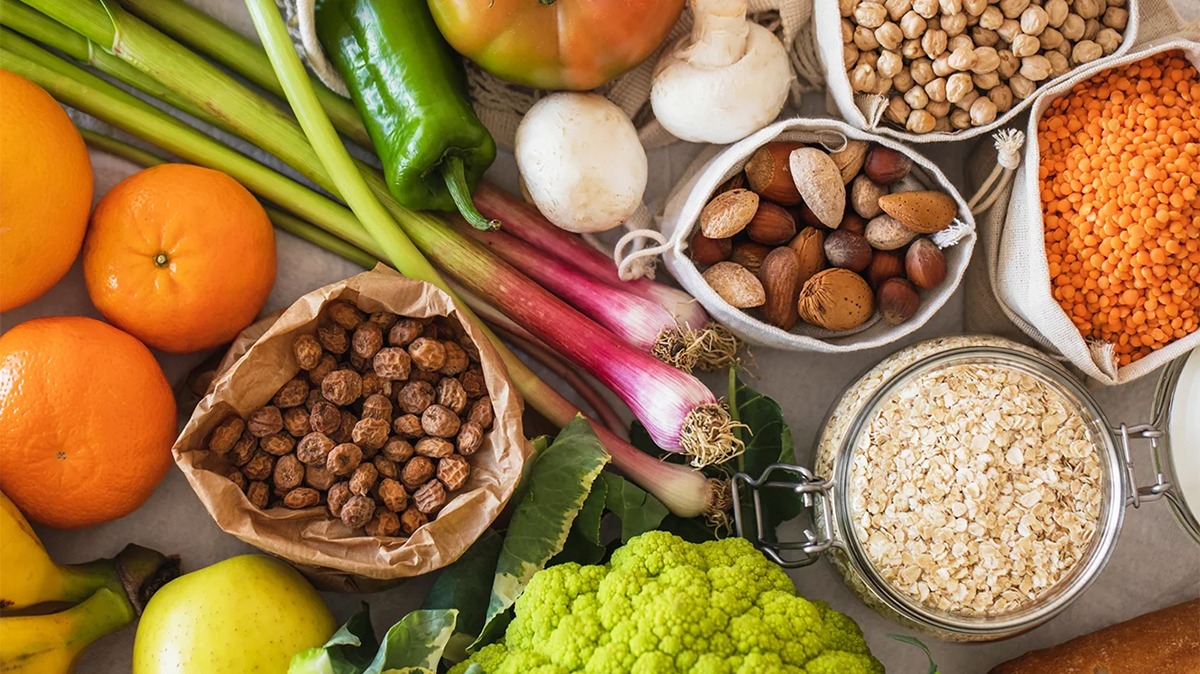“You can’t help getting older, but you don’t have to get old.” – George Burns
As we age, our bodies naturally tend to carry extra weight. The digestive system slows down which leads to weight gain over time. The Mayo Clinic cites that men over age 51 need 30 grams of fiber each day while women of the same age need 21 grams a day.
Two Categories of Fiber
- Soluble Fiber: this type dissolves in water to form a gel-like material. It can help lower blood cholesterol and glucose levels. It’s found in oats, peas, beans, apples, citrus fruits, carrots and barley.
- Insoluble Fiber: promotes the movement of material through your digestive system and increases stool bulk. It benefits those who struggle with constipation or irregular stools. Good sources of insoluble fiber can be found in whole-wheat flour, wheat bran, nuts, beans, and vegetables such as cauliflower, green beans, and potatoes.
It’s not uncommon for constipation to become an issue for many folks as they age. Constipation is generally described as having fewer than three bowel movements a week. Occasional constipation is quite common. However, chronic constipation can interfere with a person’s ability to go about their daily tasks.
If you are caring for an elder living with Dementia; who may not be able to self-identify or share that they are having bowel issues like constipation; it can lead to changes in their personality like resistance to care or angry outbursts. Therefore, to avoid care issues that may be caused by untreated constipation; it’s a good idea to naturally increase fiber intake by consuming fiber-rich foods.
Be Careful
Although high-fiber foods are good for your health; adding too much fiber too quickly can promote intestinal gas, abdominal bloating, and cramping. Therefore, increase your intake gradually to allow the natural bacteria in your digestive system to adjust to the change.
Additionally, as you increase your fiber intake you should be increasing your water intake as well. Fiber works best when it absorbs water. Both fiber and water are important to a healthy digestive system. And the water aides in softening the stool inside your body and making it easier to pass through and out of your body.
Overall Health Benefits
In addition to assisting your bowel health; a high-fiber diet may lower your risk of developing hemorrhoids and diverticular disease (small pouches in your colon). Some studies suggest a high-fiber diet likely lowers the risk of colorectal cancer.
Soluble fiber found in beans, oats, flaxseed, and oat bran may help lower total blood cholesterol levels while also providing heart-health benefits such as reducing blood pressure and inflammation.
For those with diabetes, soluble fiber can slow the absorption of sugar and help improve blood sugar levels. High-fiber foods tend to be more filling than low-fiber foods, so you’re likely to eat less and stay satisfied longer.
By the Numbers
Here’s a quick peek at some of the fruits, vegetables, grains, and seeds that have good fiber content to aide your overall wellness goals
|
Serving Size |
Total Fiber (grams) |
|
|
Raspberries |
1 cup |
8.0 |
|
Pear |
1 medium |
5.5 |
|
Banana |
1 medium |
3.0 |
|
Green peas (boiled) |
1 cup |
9.0 |
|
Broccoli (boiled) |
1 cup |
5.0 |
|
Baked potato (w/skin) |
1 medium |
4.0 |
|
Bran Flakes |
¾ cup |
5.5 |
|
Quinoa (cooked) |
1 cup |
5.0 |
|
Popcorn (air-popped) |
3 cups |
3.5 |
|
Lentils (boiled) |
1 cup |
15.5 |
|
Baked beans (canned) |
1 cup |
10.0 |
|
Almonds |
1 oz. |
3.5 |
Source: USDA National Nutrient Database for Standard Reference, Legacy Release



